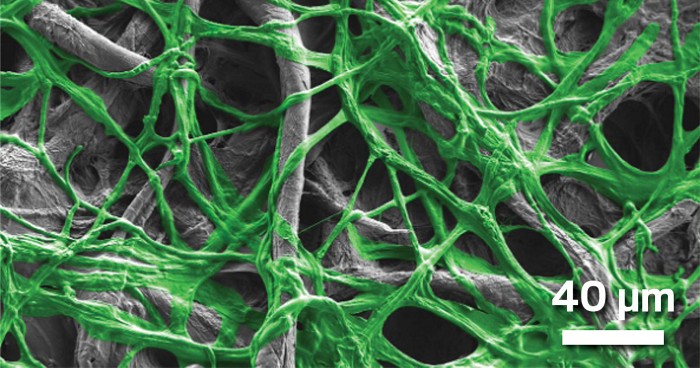Fungi have a reputation for appearing where humans don’t want them: on crops, in basements and cold storage rooms, and in the human body. Worse, fungi are getting better at resisting conventional defenses, meaning we need to either use even more fungicides—which would exacerbate the resistance problem—or innovate our tools.
Researchers have now developed a spray that can keep fungi at bay. The nontoxic solution forms an extremely hydrophobic surface coating that makes it harder for fungi to latch on to a surface and kills them if they do take root.
Boaz Pokroy, a materials scientist at Technion—Israel Institute of Technology, and his colleagues decided to leverage their previous work with antibacterial fatty acids to develop a novel “dual mode” agent that is very difficult for the fungi to become resistant to. First, stearic acid, with its inherent hydrophobicity, keeps fungi from sticking to the surface. This alone reduced the growth of gray mold, Botrytis cinerea, by more than 60% on filter paper.
Second, the addition of a shorter-chain fatty acid, such as caprylic acid, provides fungicidal power against any fungi that manage to anchor themselves. With the combined fatty acids, the researchers were able to achieve total inhibition of the mold.
Pokroy and his team explain that after spraying, stearic acid forms crystal nuclei, which caprylic acid adsorbs onto. As the spray’s solvent evaporates, stearic acid crystals assemble into clusters, thus producing a rough surface imbued with adsorbed liquid layers of caprylic acid, which is primed to kill fungi. The caprylic acid leached out of the coating after about a week, thereby diminishing the potency of the coating.
Pokroy points to ventilation ducts as a prime location to use the new spray. Air ducts often become breeding grounds for fungi due to their damp, dark, and cold interiors. These fungi release fungal spores into the air. In hospital settings, those spores raise the risk of infection for already vulnerable people. Since conventional fungicides are toxic to humans and the environment, stringent limits exist on the site, quantity, and duration of their use.
Jonathan C. Barnes, a chemistry professor at Washington University in St. Louis who wasn’t involved in the study, commended the work and found the technology “very scalable,” as the same fatty acids are common ingredients of food and cosmetics.
“The fact that the dual-purpose coating was successfully applied to both glass slides and cellulose filter substrates is an indication that the technology could be used on a variety of surfaces and thus in many different applications,” he says. One potential application he saw was spraying this coating on medical implants, where a quick burst release of the medium-chain fatty acids may prevent infections during surgery.
